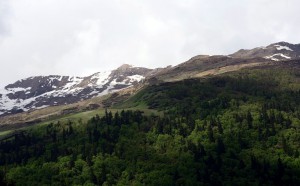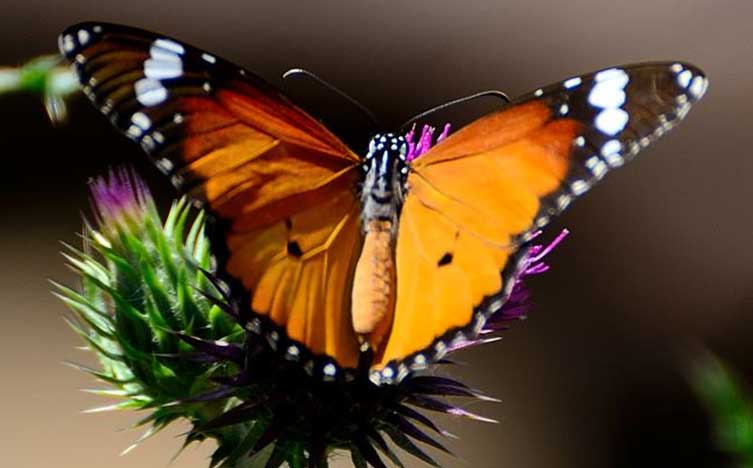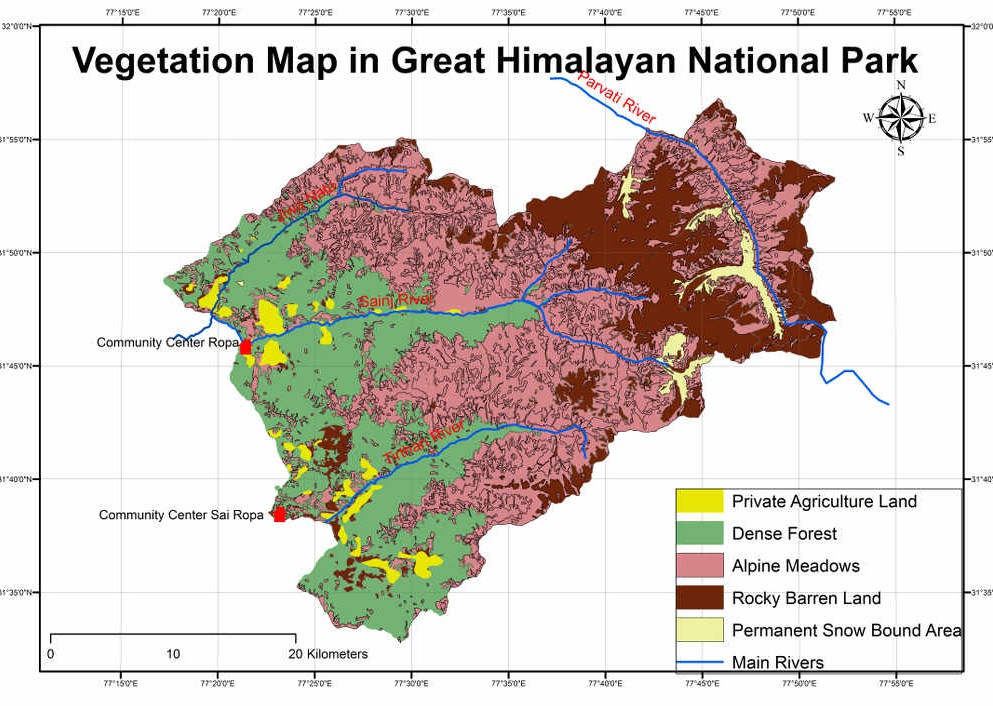
Biogeography
Biogeography
The Great Himalayan National Park (GHNP) is at the junction of the world’s two major faunal realms – the Indomalayan to the south and the Palaearctic to the north.
The park’s temperate forest flora and fauna mark the westernmost limit of the Sino-Japanese region, and its high-altitude ecosystem has floral affinities with, amongst others, the Mediterranean, Tibetan and Cis-Himalayan regions.
GHNP has the plant and tree species jatamansi, salam panja, and English yew, in common with Afghanistan and western China. It also shares the sea-buckthorn with the Palaearctic region, the deodar, alpine yellow violet and alpine meadow grass with the Mediterranean region, and the euphorbia with south India.
Endemic flora and fauna have also evolved in the Northwestern Himalaya, including Draba lasiophylla Royle, several species of Balsams, and the Himalayan tahr, all of which are well represented in the park.
Because of its range of species, and the compact nature of their abode, GHNP is the highest priority conservation zone in the western Himalaya.






